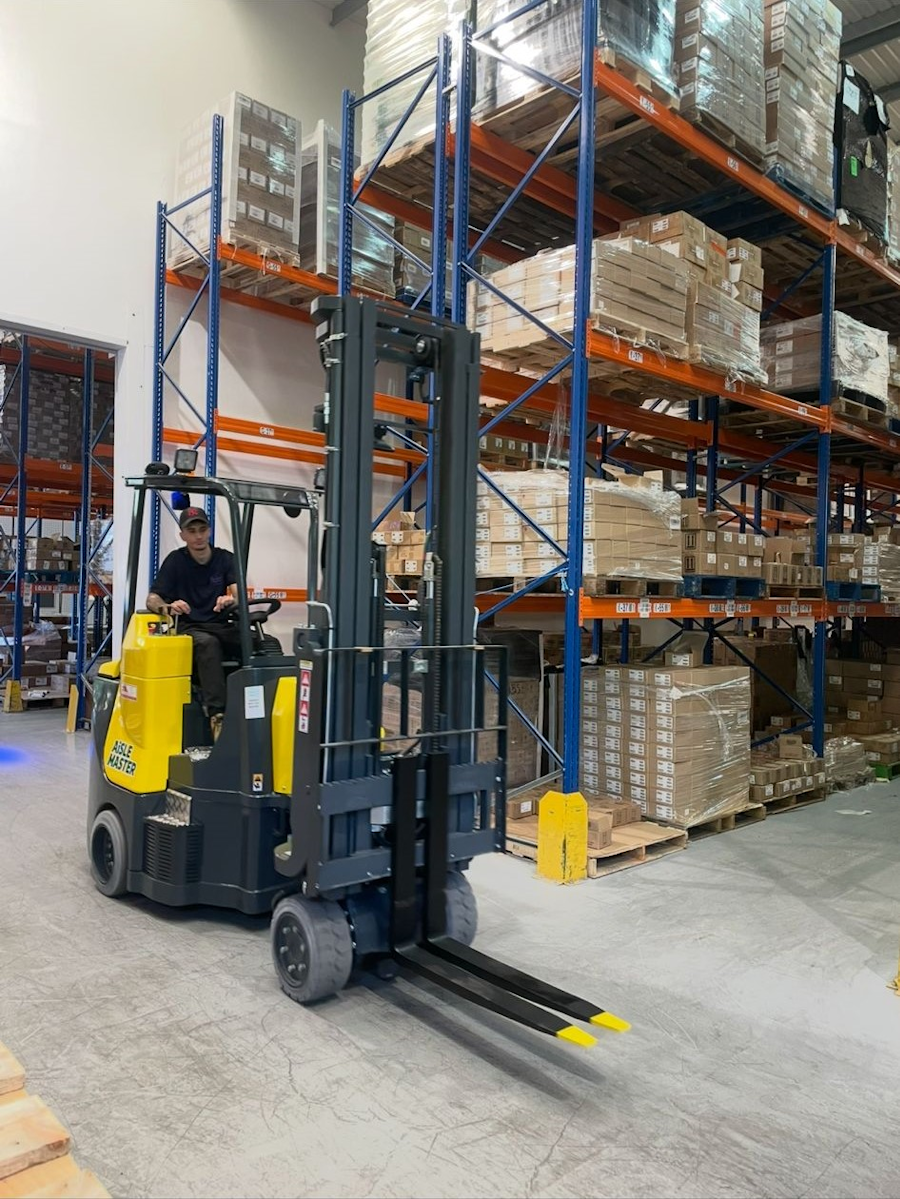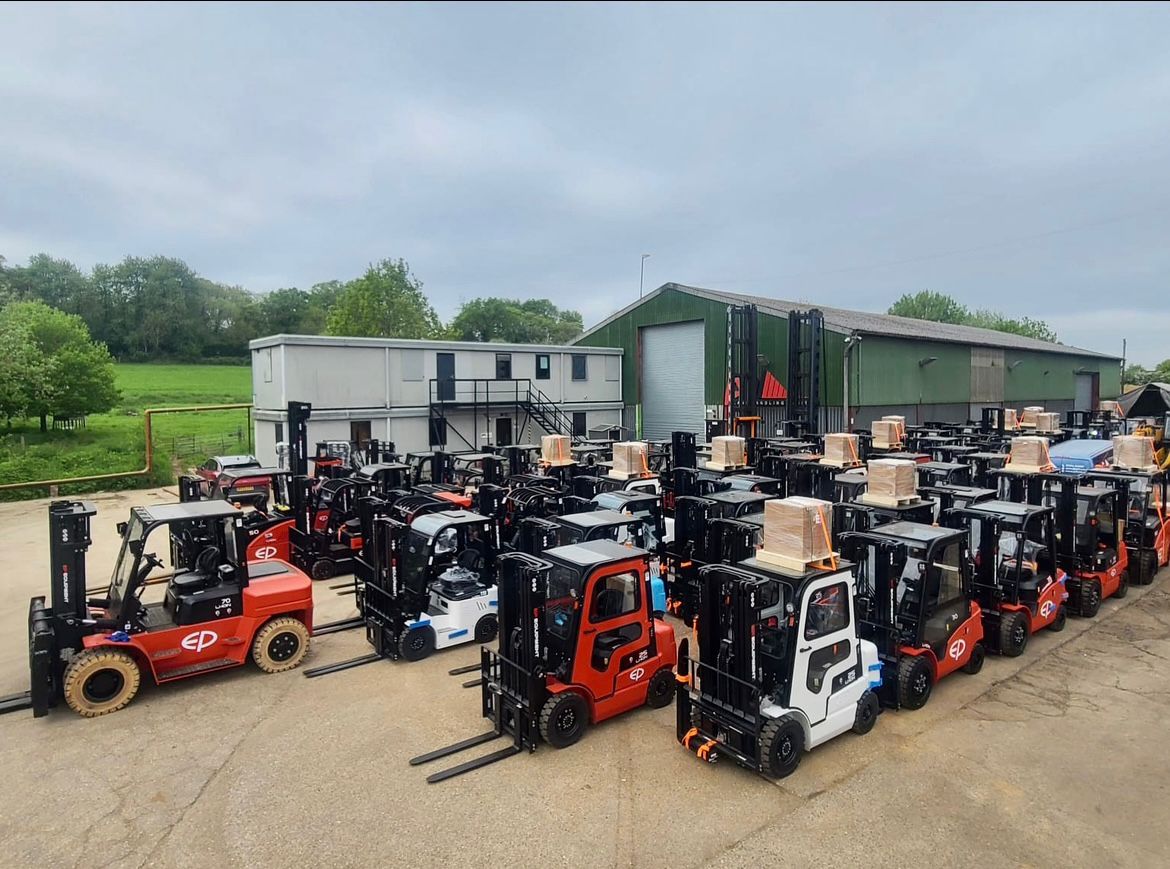Blog
How to Choose the Right Forklift for Your Warehouse Needs

How to Choose the Right Forklift for Your Warehouse Needs
Choosing the right forklift for your warehouse operations can significantly boost efficiency, reduce operational costs, and improve safety. Whether you’re managing a small stockroom or a large distribution centre, having the proper forklift truck ensures that goods are moved, stacked, and stored effectively. But with a wide variety of options available—such as pallet trucks, reach trucks, and electric forktrucks—knowing what to choose can be overwhelming.
In this guide, we’ll walk you through key considerations when selecting the right forklift or jack pallet truck to match your warehouse needs.
1. Assess Your Warehouse Environment
The first step in choosing the ideal forklift is understanding your warehouse layout:
Aisle Widths: If your warehouse has narrow aisles, a reach truck or reach forklift is ideal due to its slim profile and extended lifting capabilities.
Floor Type: Uneven floors or outdoor environments may require rugged pneumatic tires, while smooth indoor flooring works well with cushion-tired electric forktrucks.
Lift Height: Measure your racking system and ceiling height. Reach forklifts are designed for high stacking and vertical storage.
2. Identify Load Requirements
- Understanding the size, shape, and weight of your typical loads is critical:
- Load Capacity: Ensure the forklift truck you choose can safely handle your heaviest loads. Overloading is not only dangerous but can also damage the equipment.
- Pallet Size: If you regularly move standard-sized pallets, jack pallet trucks or manual pallet trucks might suffice for short-distance transport.
Load Type: For bulky or irregular loads, you might need attachments like clamps or rotators.
3. Choose the Right Type of Forklift
Here’s a quick breakdown of popular forklift types and their typical uses:
- Pallet Trucks and Jack Pallet Trucks: These are ideal for ground-level transport. Pallet trucks—also called jack pallet trucks—are cost-effective tools for short-range movement of pallets. They are best suited for warehouses with minimal stacking requirements.
- Manual Pallet Trucks: Good for light loads and occasional use.
- Electric Pallet Trucks: Suitable for frequent use and reduce operator fatigue.
- Reach Truck / Reach Forklift: If your warehouse involves high stacking in narrow aisles, a reach truck or reach forklift is your best bet. These trucks have the ability to extend their forks into racking systems, making them perfect for dense storage areas.
- Electric Forktruck: An electric forktruck is a clean, quiet, and efficient option for indoor use. It’s perfect for operations that prioritize low emissions and require maneuverability in tighter spaces. They typically have a lower upfront cost of operation and maintenance compared to internal combustion forklifts.
- Counterbalance Forklift Truck: These are the most commonly used forklift trucks and are ideal for general-purpose use in larger open areas. They offer excellent stability and are available in electric, diesel, and LPG versions.

4. Consider Power Source Options
Electric Forktrucks: Great for indoor use, low noise, and zero emissions. However, they require battery charging infrastructure.
Diesel/LPG Forklifts: Better for heavy-duty lifting and outdoor applications but not suitable for indoor use due to emissions.
If your operation is indoors, an electric forktruck is typically the most environmentally and economically friendly choice.
5. Evaluate Frequency of Use
If your forklift will be used continuously throughout the day, investing in a high-quality electric or LPG-powered forklift truck with ergonomic features is essential. For infrequent use, a manual pallet truck or jack pallet truck may suffice.
6. Factor in Maintenance and Servicing
Every forklift needs regular maintenance. Electric models usually have lower maintenance requirements, whereas combustion engine forklifts may require more frequent servicing.
Ask about:
- Parts availability
- Maintenance schedules
- Downtime history
- Warranty coverage
7. Rent or Buy?
For short-term needs or peak seasons, consider forklift rental options. Renting allows flexibility without a large upfront investment. However, if you have long-term, high-frequency needs, owning a forklift truck could be more cost-effective in the long run.
Final Thoughts...
The right forklift is the backbone of a productive warehouse operation. By understanding your warehouse environment, load requirements, and usage frequency, you can choose between pallet trucks, reach forklifts, jack pallet trucks, or electric forktrucks with confidence. Each type serves a unique purpose, and selecting the right one will lead to better efficiency, safety, and cost savings.
If you're still unsure, consulting with a forklift expert or supplier can help assess your needs and recommend the best equipment for your facility.
Subscribe
Keep up to date with PHL and all things forklift machinery.